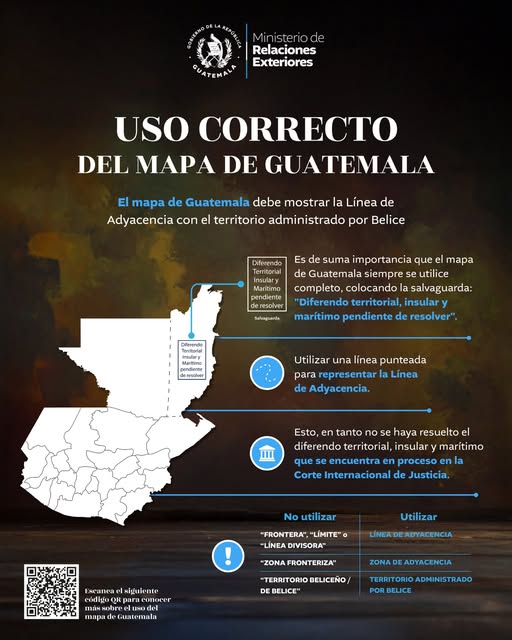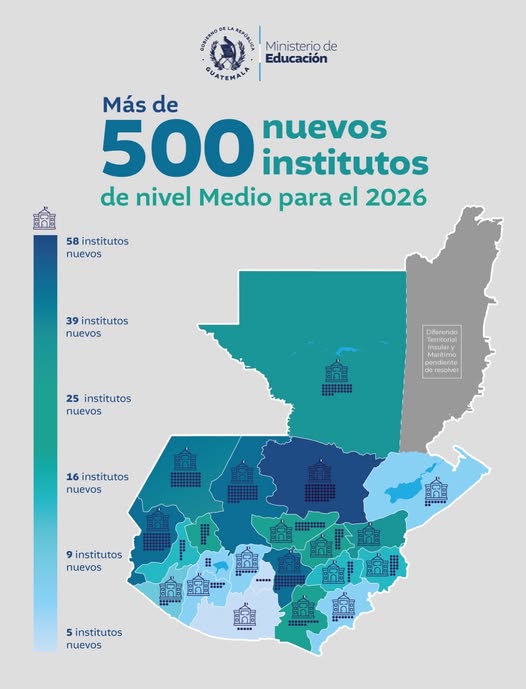As the territorial, insular, and maritime dispute between Belize and Guatemala moves closer to oral hearings at the International Court of Justice (ICJ), the Guatemalan government has intensified an educational campaign urging its institutions to use maps that depict Belize as part of Guatemala. The latest instance occurred on November 14th, when Guatemala’s Ministry of Foreign Affairs posted an image on its official Facebook page showing a map with Belize annexed, accompanied by instructions explaining why it must be portrayed that way.
According to the Ministry of Foreign Affairs, the “correct” version of their national map must include Belize, with a dotted line marking the current adjacency zone between both countries. The instructions further require that all such maps include a clause stating that the territorial, insular, and maritime dispute remains unresolved. The ministry also reminded Guatemalans that the adjacency zone should never be referred to as a border, and that Belize must be described as an “administration,” not a country.
This is not the first time the Guatemalan government has pushed for maps depicting Belize as part of its territory. For years, Guatemala has publicly maintained that it does not recognize an international border between the two nations and has frequently included Belize on its official maps and promotional materials. The portrayal intensified under former president Jimmy Morales, who took office in 2016 and repeatedly stated that Guatemala’s Constitution defines Belize as Guatemalan territory. Morales insisted it was his responsibility as head of state to promote efforts toward the “reincorporation” of Belize.
Belizeans have firmly rejected these actions, viewing them as offensive and threatening to Belize’s sovereignty. Many citizens remain confident that such propaganda will end once the ICJ issues its ruling, which they expect will be in Belize’s favor. As on previous occasions, the Government of Belize has not released a formal protest note in response to the most recent map campaign.
The long-standing territorial dispute is now before the ICJ, where both countries have already submitted their written memorials. The next phase will be the oral hearings, expected to begin in 2026. Guatemala’s claim seeks more than half of Belize’s terrestrial territory, all its cayes, and its maritime spaces.
A final ruling from the ICJ is anticipated within the next two years. Once delivered, the judgment is final and cannot be appealed. While the ICJ cannot enforce its decision, both Belize and Guatemala have formally committed to respecting and adhering to the ruling.

Share
Read more

